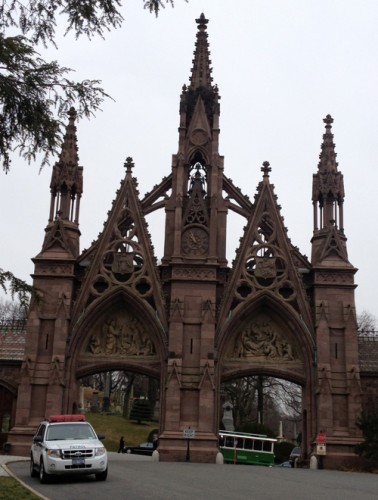I've used my time in New York for some odd birding. I love all the artwork that can be found around the city and I had a few things on my list to find: a Bansky, an Edvard Munch. Like birding, I had to follow a series of directions and when I finally got to the Munch:some dude was standing in front of it...3 inches in front of it (and was he too close, stressing the Munch out?). The Banksy was covered, not unlike a blackburnian warbler in the top of the fully leafed out tree canopy. The city had painted over it, but there were a few places with loose chips and you could see miniscule pieces of it underneath.

But the subway has all kinds of art and a surprising amount with identifiable birds. This is a mosaic at the Jay Street station by Ben Snead called "Departures and Arrivals."

The birds depicted in it are all non native and invasive species. Above is a starling and house sparrows. But I love how the artist used the tiles to capture the irridescence of the starling feathers.

The other bird is the monk parakeet which have quite the strong hold in Brooklyn. We've rented an apartment there that has a view of the Statue of Liberty. It's an odd sensation to be standing there in the morning, clutching a cup of coffee and taking in that symbol of American freedom and promise...and then have noisy streaks of green fly between you and statue. Then I have to think about these released cage birds establishing a colony like so many people who have passed by Lady Liberty (though, I'm not sure the parakeets had too much choice to choose to live here). All the brown stones on a cloudy winter day in Brooklyn broken up by noisy, flashy green parrots is so strange tho.
I'm not sure about the insect and fish depicted in the mosaic but I wonder if they are non natives too? What is that, a lion fish? It's a colorful mural and worth a peak if you are ever in New York. A real treat can be found at the Museum of Natural History Station:

Check out the whooping crane! Actually, when we hit this stop, I grabbed my camera and said aloud but to myself, "I need photo of that crane and dodo." Non Birding Bill immediately walked over. I said, "I didn't mean you, there's a dodo outline behind the crane!" But he does make a good representation for the scale of the mosaics.

There are all sorts of animals all over the station and it's worth taking the time to explore and see what's there. It's an evolutionary chain from the Big Bang to the plethora of fauna seen on this planet. I love the random birds on there. It's not all cardinals and eagles, it's cool birds that perhaps the average person may not be aware are out there like the above black-bellied whistling ducks.

I think this was my favorite--a pileated woodpecker in the subway! Who knew?
Here's a break down of all that can be found at that station. The large work is called "For Want Of A Nail." It's interesting to note that some species have a tiny question mark made of really tiny tiles mixed in them. I think it's supposed to represent a question of whether or not these species will remain with us in the future. But there didn't appear to be one on the whooping crane so NBB wondered if there was some street artist inserting mosaic tags.
Here are some of the other birds:

Laughing gull.

Kiwi.

Killdeer.

Okay, not birds but still cool--monarchs!

Love that monarch caterpillar!

Ruby-throated hummingbird.






 I know I'm usually the first to say that seeing an American robin is NOT a sure sign of spring since they are in the US all winter if you know where to look, but yesterday while scouting locations for some spring programming for the Mississippi National River and Recreation Area we heard robins singing on territory! On top of that, we heard a red-winged blackbird. Didn't see it, but heard it and in my book, that means spring in Minnesota. Also, look behind the robin's chin in the above photo--that's a full on bud! As much as I've enjoyed a winter without shoveling and snow emergencies, I plan a lot of my work based on the slow birding of March, that usually still winter for us. How can I keep my deadlines if spring is going to happen and Minnesota is having 50 degree days already? Blerg.
I know I'm usually the first to say that seeing an American robin is NOT a sure sign of spring since they are in the US all winter if you know where to look, but yesterday while scouting locations for some spring programming for the Mississippi National River and Recreation Area we heard robins singing on territory! On top of that, we heard a red-winged blackbird. Didn't see it, but heard it and in my book, that means spring in Minnesota. Also, look behind the robin's chin in the above photo--that's a full on bud! As much as I've enjoyed a winter without shoveling and snow emergencies, I plan a lot of my work based on the slow birding of March, that usually still winter for us. How can I keep my deadlines if spring is going to happen and Minnesota is having 50 degree days already? Blerg.











